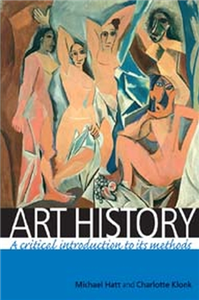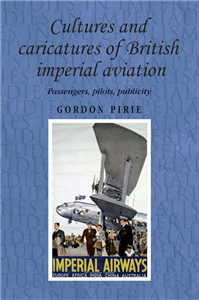Your Search Results
-
Promoted ContentThe ArtsJanuary 2019
The films of Luc Besson
Master of spectacle
by Susan Hayward, Philip Powrie
This fascinating collection looks at the career and films of Luc Besson, one of the most acclaimed figures in international cinema. Contributions have been assembled from all over the world, and their different approaches reflect this geographical diversity. Films covered range from Besson's first feature, La Dernier Combat, to the international blockbusters The Fifth Element and Joan of Arc. The essays range from looking at costume design to musical scores, and the final chapter offers a transcript of a previously unpublished interview with the man himself. He is the only French director to have crossed over successfully during the 1990s into the blockbuster spectacular we associate with Hollywood cinema and yet this is only the second book in English on this major international director. The films of Luc Besson will make fascinating reading for anyone interested in the career and films of the 'master of spectacle'.
-
Promoted ContentThe ArtsJanuary 2019
Luc Besson
by Susan Hayward
Widely taught on Film Studies courses and in French Cultural Studies programmesLuc Besson is a popular and respected filmmaker who has achieved international fameA welcome addition to the French Film Directors series.
-
 Trusted Partner
Literature & Literary StudiesJune 2019
Trusted Partner
Literature & Literary StudiesJune 2019Titus Andronicus
by Jim Bulman, Michael Friedman, Carol Chillington Rutter, Alan Dessen
Michael D. Friedman's second edition of this stage history of Shakespeare's Titus Andronicus adds an examination of twelve major theatrical productions and one film that appeared in the years 1989-2009. Friedman identifies four lines of descent in the recent performance history of the play: the stylised, realistic, darkly comic, and political approaches, which culminate in Julie Taymor's harrowing film Titus (1999). Aspects of Taymor's eclectic vision of ancient Rome under the grip of modern fascism were copied by several subsequent productions, making Titus the most characteristic, as well as the most influential, contemporary performance of the play. Friedman's work extends Alan Dessen's original study to include Taymor's film, along with chapters devoted to the efforts of international directors including Gregory Doran, Silviu Purcarete, and Yukio Ninagawa.
-
 Trusted Partner
Literary studies: c 1500 to c 1800November 2007
Trusted Partner
Literary studies: c 1500 to c 1800November 2007Masques of Difference
Four court masques by Ben Jonson
by Kristen Mcdermott
Masques of difference presents an annotated edition of four seventeenth-century entertainments written by Ben Jonson for the court of James I. These masques reflect both the confidence and the anxieties of the English aristocracy at a time when notions of monarchy, empire, and national identity were being radically redefined. All four masques reflect the royal court's self-representation as moral, orderly, and just, in contrast to stylised images of chaotically (and exotically) 'othered' groups: Africans, the Irish, witches, and the homoeroticised figure of the Gypsy. This edition presents two masques that have received recent attention in the classroom - The Masque of Blackness and The Masque of Queens - and two that have never before been anthologised for the student reader - The Irish Masque at Court and The Masque of the Gypsies Metamorphosed. This anthology offers students the latest in scholarship and critical theory and essential clues for understanding the ideologies that shaped many of the modern structures of English culture.
-
 Trusted Partner
The ArtsMarch 2006
Trusted Partner
The ArtsMarch 2006Art history
A critical introduction to its methods
by Michael Hatt, Charlotte Klonk
Art History: A critical introduction to its methods provides a lively and stimulating introduction to methodological debates within art history. Offering a lucid account of approaches from Hegel to post-colonialism, the book provides a sense of art history's own history as a discipline from its emergence in the late-eighteenth century to contemporary debates. By explaining the underlying philosophical and political assumptions behind each method, along with clear examples of how these are brought to bear on visual and historical analysis, the authors show that an adherence to a certain method is, in effect, a commitment to a set of beliefs and values. The book makes a strong case for the vitality of the discipline and its methodological centrality to new fields such as visual culture. This book will be of enormous value to undergraduate and graduate students, and also makes its own contributions to ongoing scholarly debates about theory and method. ;
-
 Trusted Partner
Humanities & Social SciencesJune 2012
Trusted Partner
Humanities & Social SciencesJune 2012Cultures and caricatures of British imperial aviation
Passengers, pilots, publicity
by Gordon Pirie, Andrew Thompson, John Mackenzie
The new activity of trans-continental civil flying in the 1930s is a useful vantage point for viewing the extension of British imperial attitudes and practices. Cultures and caricatures of British imperial aviation examines the experiences of those (mostly men) who flew solo or with a companion (racing or for leisure), who were airline passengers (doing colonial administration, business or research), or who flew as civilian air and ground crews. For airborne elites, flying was a modern and often enviable way of managing, using and experiencing empire. On the ground, aviation was a device for asserting old empire: adventure and modernity were accompanied by supremacism. At the time, however, British civil imperial flying was presented romantically in books, magazines and exhibitions. Eighty years on, imperial flying is still remembered, reproduced and re-enacted in caricature. ;










